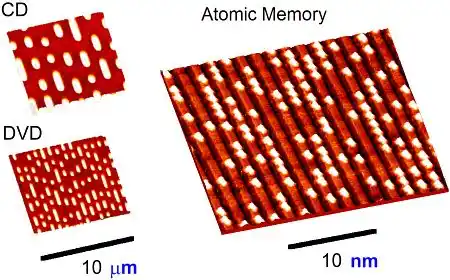افشین رشید
اُستادیار ؛ عضو هیات علمی دانشگاه آزاد اسلامی واحد علوم و تحقیقات تهران
615 یادداشت منتشر شدهTesting nano memories based on a particle enclosed in a (one-dimensional nano memory).

Note: Use nanotechnology in quantum computing and other similar electronic technologies, There are two basic principles at the core of nanotechnology: First, the smaller you make the material, the higher the relative surface area of the material. And the second is the loss of bulk properties instead of quantum phenomena when you reach such a small scale.
Quantum nanotechnology is based on the principle of electron tunneling. The basic theory is that a particle trapped in a one-dimensional nanomemory cannot escape unless an electron breaks its way out of the confinement. This is a phenomenon that is exhibited only by quantum materials and cannot be seen with any bulk material. This principle can be extended to include all 3 dimensions - the so-called particle in a 3D nano-memory. The amount of electron confinement introduced into a material determines its dimension - because quantum dimensions are more relative to electron confinement (and in how many dimensions electrons act in it) than The spatial arrangement is atomic.Quantum dots are probably the best-known quantum structure in nano-memories. The interesting thing about quantum dots is that electronically, they are confined in all three dimensions, so they are classified as zero-dimensional materials.

Using the structure of Nanomolecular memory , it is possible to reduce the size of memory bits more and thus The device increased the density of the magnetic memory and its efficiency and lowered its cost. Nano lithography methods are now being used to prepare some very powerful memories.Nanoelectronics science and technology features Nano molecular memories memory) offer a difference. For example, photorefractory materials represent only one type of optical memory. In fact, by using nano technology, the storage capacity of information can be increased by a thousand times or more.

Storing information is a very important and necessary topic that can be done in different ways through Nanomolecular memory One of the new tools for storing information is the use of nickel quantum dots in nanometer sizes, which are expected to be used to store terabytes of data. According toNano molecular memory there is a high potential for activity in this field.
Conclusion:
used nanotechnology in quantum computing and other similar electronic technologies, There are two basic principles at the core of nanotechnology: First, the smaller you make the material, the The ratio of materials increases. And the second is the loss of bulk properties instead of quantum phenomena when you reach such a small scale.